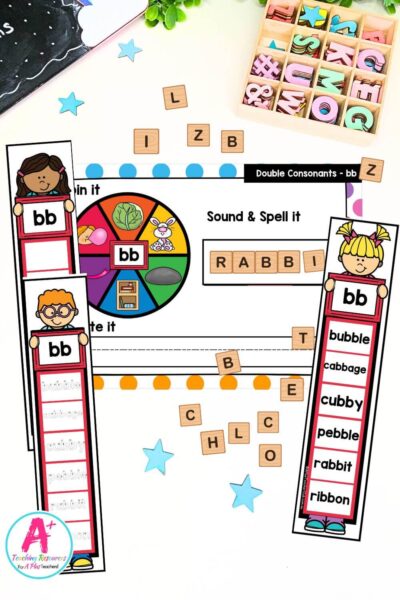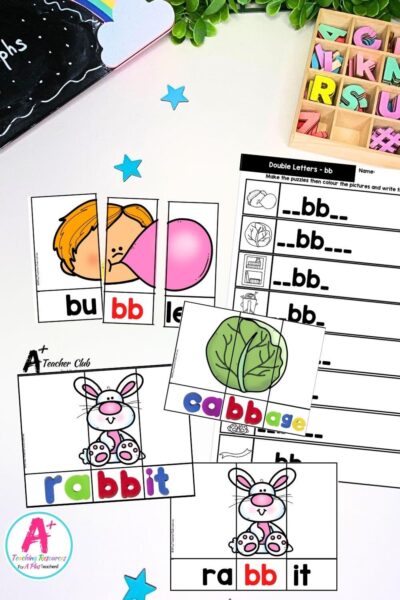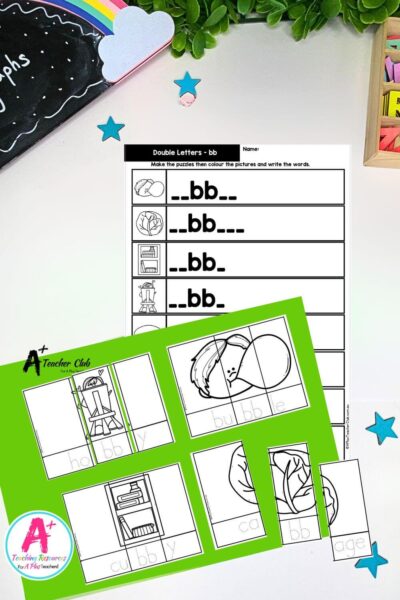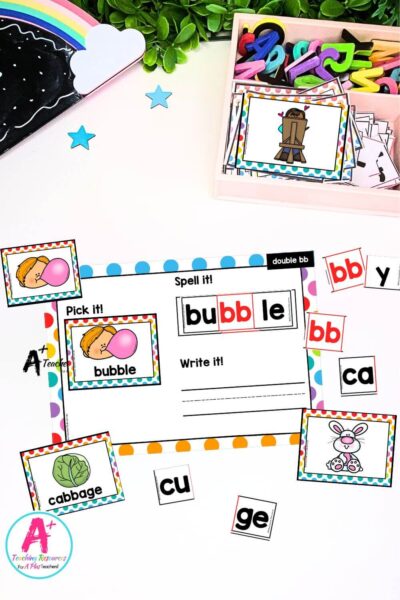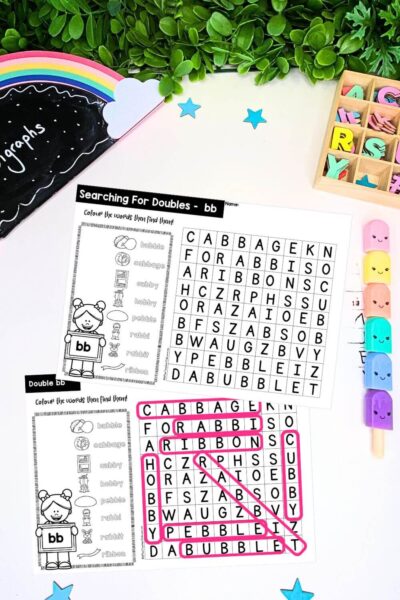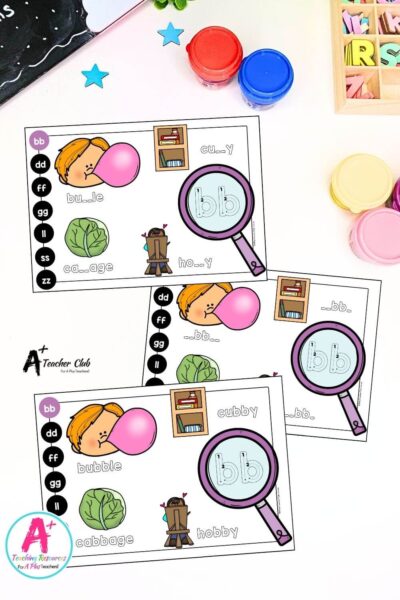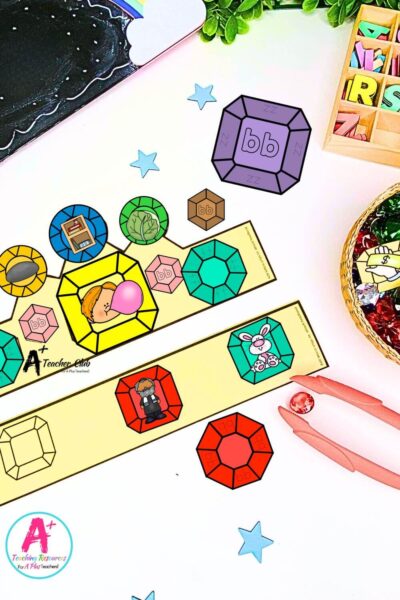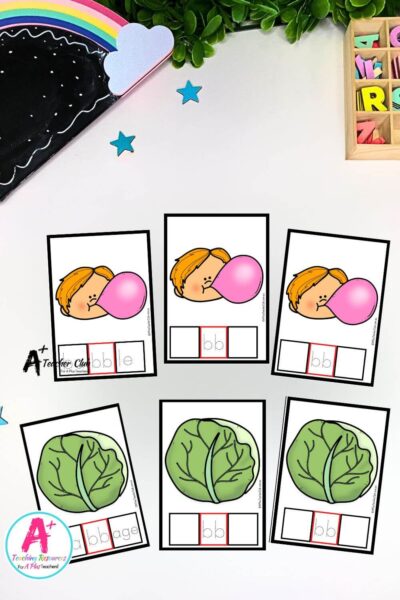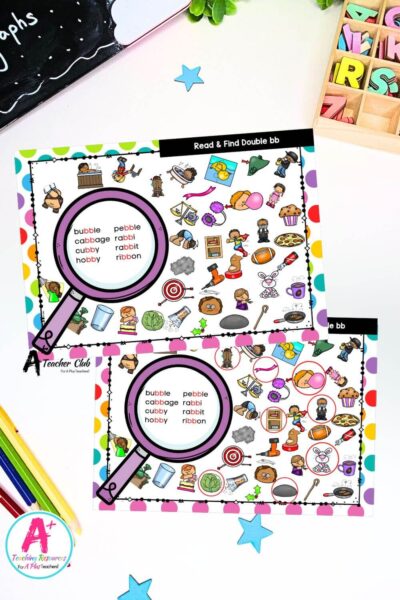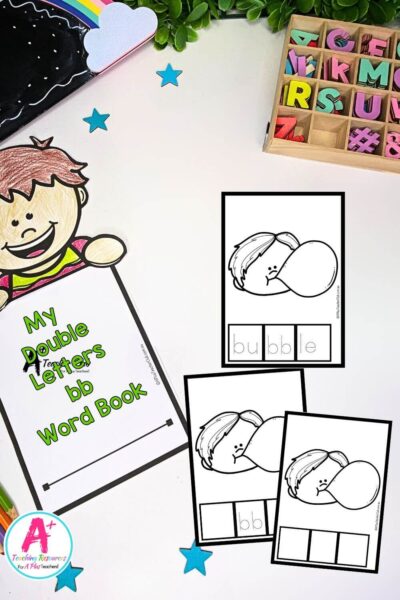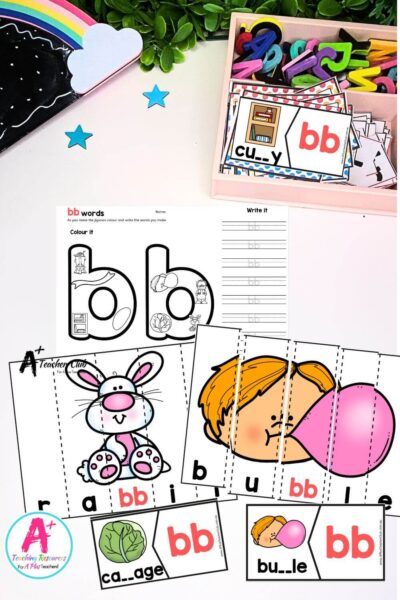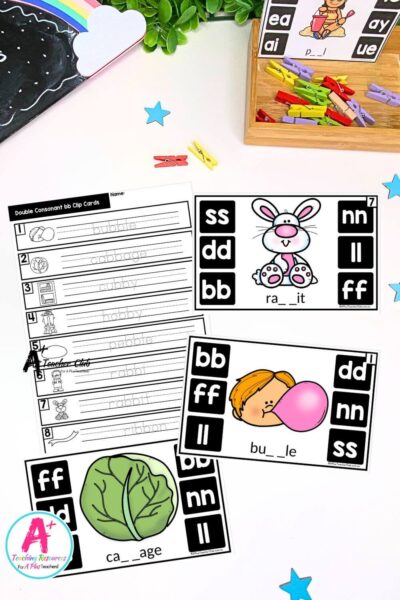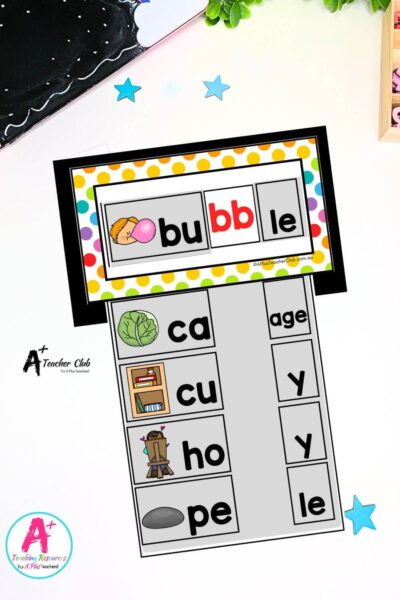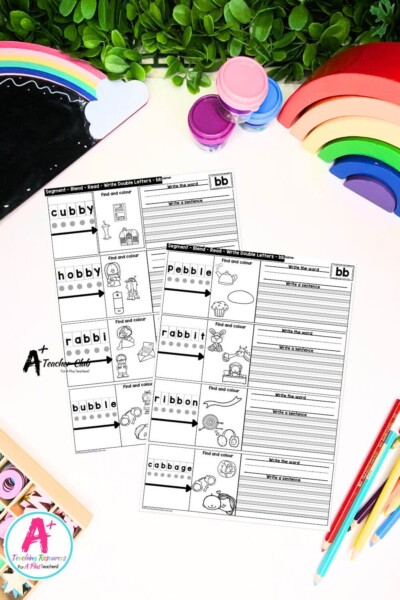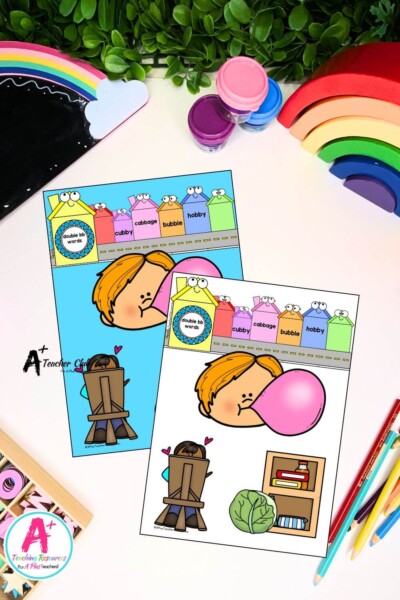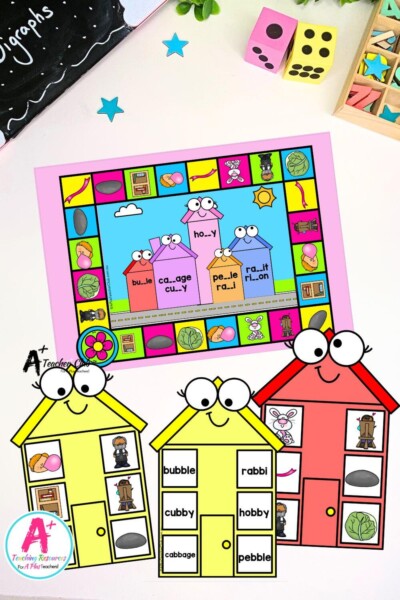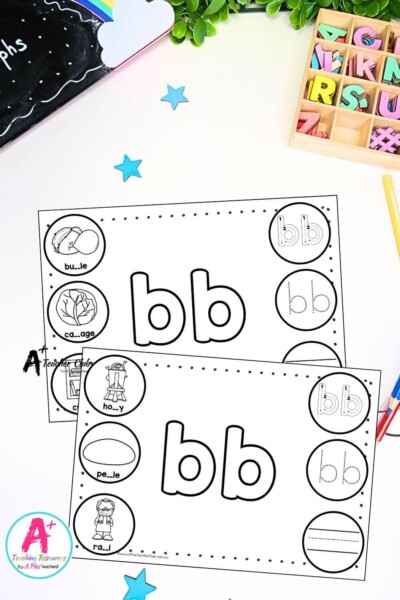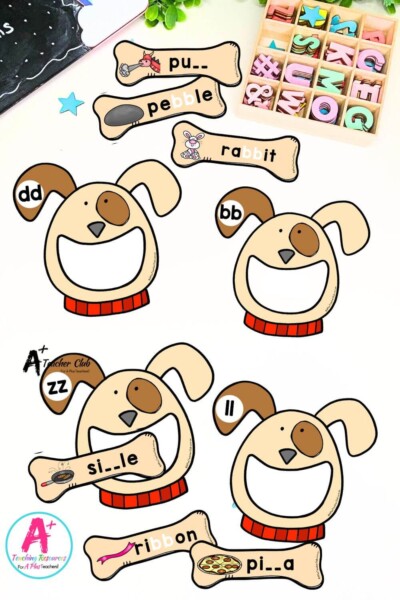Teaching Double Consonant “bb”
Phonics, Spelling, & Grammar Resources
Teaching phonics and sounds can be challenging for children, especially when it comes to understanding the rules for double consonants like “bb.” Yet, mastering this rule is crucial for students to excel in reading and spelling. In this guide, we’ll explore the ins and outs of the double “bb” consonant rule, providing clear examples and addressing any difficulties students may encounter. Additionally, you’ll find a variety of engaging resources aimed at helping your students confidently tackle double consonants and educators Teaching Double Consonants.
What is a Double Consonant?
From a teaching phonics perspective, a double consonant occurs when the same consonant appears twice in a row within a word. This repetition often serves to emphasise the preceding vowel sound, maintain correct pronunciation, or clarify the word’s meaning.
In phonics instruction, double consonants are commonly found in words with short vowel sounds, especially when adding suffixes or to distinguish between similar words. For example, in words like “bitter,” “messenger,” and “rabbit,” the consonants “t,” “s,” and “b” are repeated to help maintain the integrity of the vowel sounds and ensure accurate pronunciation. Teaching students to recognize and use double consonants is crucial for their spelling accuracy and overall reading fluency.
When To Use “bb” Double Consonant
Here are the primary rules and examples for using the double “b” consonant:
1. Short Vowel Followed by “b”:
When a one-syllable word has a short vowel sound followed by “b,” the “b” is often doubled. This helps to preserve the short vowel sound and the word’s pronunciation.
Examples:
- “rub” becomes “rubber”
- “sob” becomes “sobbed”
2. Stress on the Final Syllable:
In words with more than one syllable, if the final syllable is stressed and has a short vowel sound followed by “b,” the “b” is often doubled.
Examples:
- “forbid” becomes “forbidden”
3. Doubling with Suffixes:
When adding suffixes like “-ed” or “-ing” to a word that ends in “b” with a preceding short vowel, the “b” is often doubled.
Examples:
- “grab” becomes “grabbed” and “grabbing”
- “stab” becomes “stabbed” and “stabbing”
Exceptions and Notes:
Here are some words with “b” that do not follow the double “b” consonant rules, along with explanations for why they don’t:
- Habit: The stress is on the first syllable, so the “b” is not doubled.
- Label: Ends with a consonant and does not follow the double consonant rule because the stress is on the first syllable.
- Cabin: The stress is on the first syllable, so the “b” is not doubled.
- Table: Ends with a vowel-consonant combination but the “b” is not doubled due to etymology and pronunciation.
- Noble: Ends with a consonant and does not follow the double consonant rule due to etymology and stress on the first syllable.
- Turbine: The stress is on the first syllable, and the word does not follow the double consonant rule.
- Gamble: The word has a short vowel sound before the consonant but the “b” is not doubled because of its etymological origin.
- Bubble: The stress is on the first syllable, which explains the double consonant, but some similar structured words might not follow this pattern.
- Clobber: The word has a double “b” but it is due to its etymology and the stress pattern in the English language.
- By understanding why these words don’t follow the double “b” rule, students can better grasp the complexities of English spelling and pronunciation.
Double Consonant “bb” Word List
“bb” Words Used in our resources
Common Issues and Confusions
Here are common confusions students may make when learning about double “b” consonants, each followed by an example:
- Overgeneralization: Students may apply the rule of doubling “b” inconsistently or incorrectly. For instance, they might incorrectly double the “b” in words like “club” or “lamb,” which do not follow the doubling rule despite having a short vowel sound.
- Pronunciation Challenges: Depending on regional accents or speech patterns, students may struggle with identifying short vowel sounds that necessitate doubling the “b.” For example, distinguishing between “rob” and “robbed” can be challenging, as the pronunciation shifts with the addition of the doubled “b.”
- Exception Words: Words like “club” or “lamb” don’t follow the rule of doubling “b” despite having a short vowel sound before the consonant. This can lead to confusion when applying the rule universally. For instance, “club” remains unchanged when adding suffixes like “-ed” or “-ing.”
- Identifying Stress: Recognizing which syllable is stressed in multi-syllabic words can be challenging, affecting the application of the double “b” rule. An example is the word “forbid,” where the stress is on the final syllable and the “b” is doubled in “forbidden.”
- Memorization: Remembering specific words that require the double “b” can be difficult, especially without consistent reinforcement and practice. For example, students might struggle to recall that “rubber” and “hobnob” follow the double “b” rule.
By addressing these confusions through targeted examples, practice exercises, and phonics awareness activities, teachers can help students master the double “b” consonant rule more effectively.
Click the images to download Each Teaching Resource:
Resources listed in this collection
Click to jump to...-
Double Consonant Spin & Spell - bb
-
Double Consonant Colour 2 Piece Puzzles - bb
-
Double Consonant B&W 2 Piece Puzzles - bb
-
Double Consonant Word Builder - bb
-
Double Consonants Word Search - bb
-
Double Consonant Playdough Mats - bb
-
Double Consonant Crown Craft - bb
-
Double Consonant Flash Cards - bb
-
Double Consonants I Spy Read & Find - bb
-
Double Consonant Student Book - bb
-
Double Consonant Strip Puzzles - bb
-
Double Consonant Clip Cards - bb
-
Double Consonant Strip Reader - bb
-
Double Consonant Spin & Spell - bb
-
Double Consonant WORKSHEETS - bb
-
Double Consonant Posters - bb
-
Double Consonant Board Game - bb
-
Double Consonant Writing Mats - bb
-
Double Consonants Feed Me Dogs
Double Consonant Resources - bb
Explore tags
More Double Consonant Activities
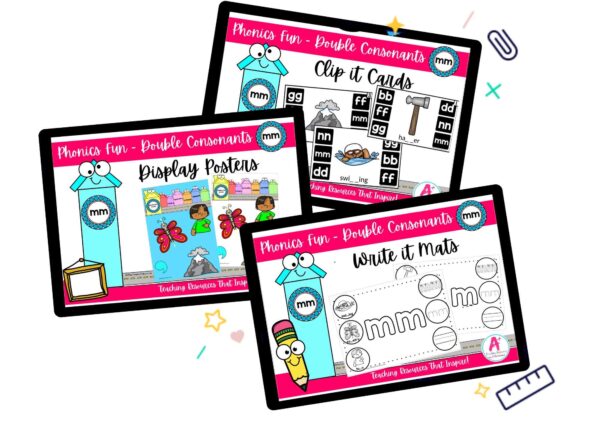
Double Consonants - mm
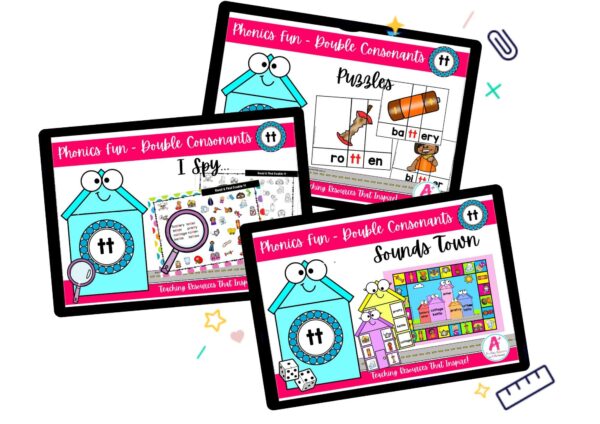
Double Consonants - tt
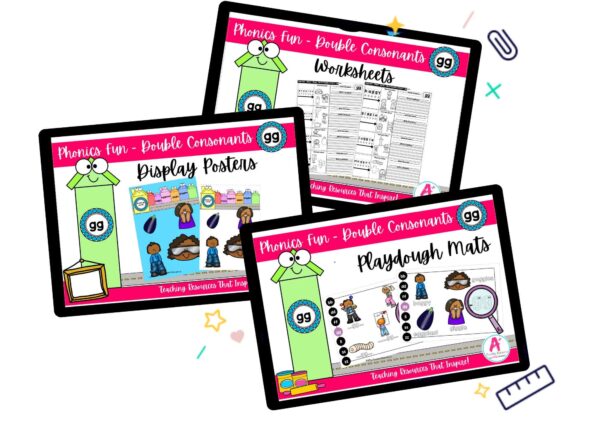
Double Consonants - gg
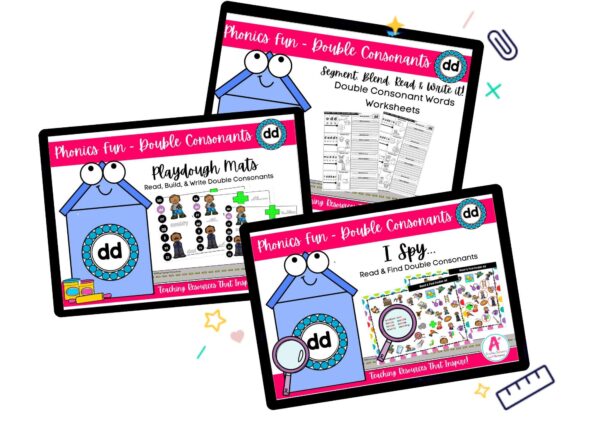
Double Consonants - dd
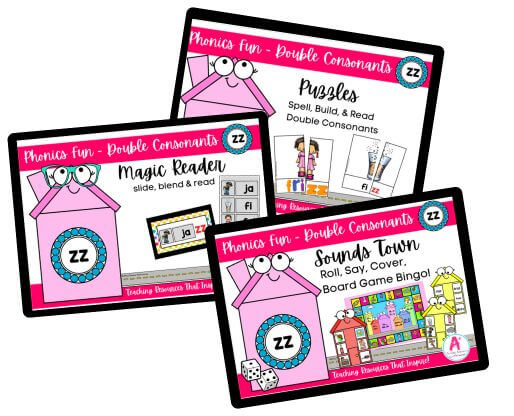
Double Consonants - zz
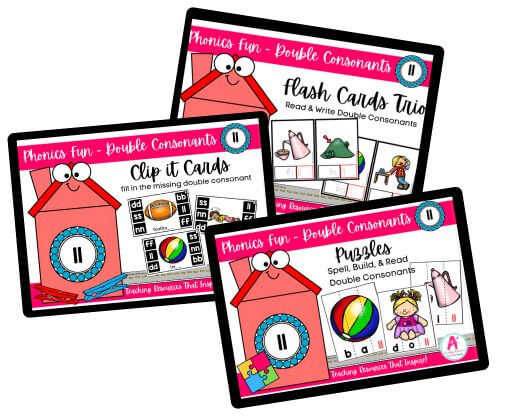
Double Consonant - ll
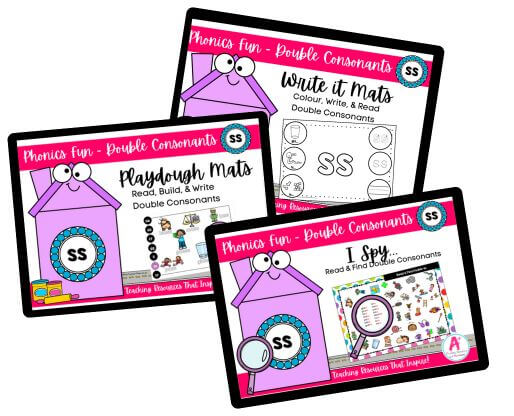
Double Consonants - ss
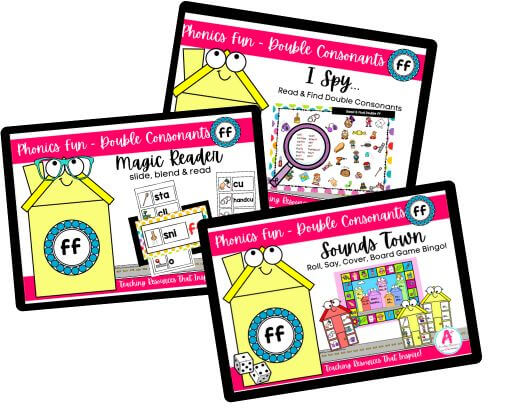
Double Consonants - ff
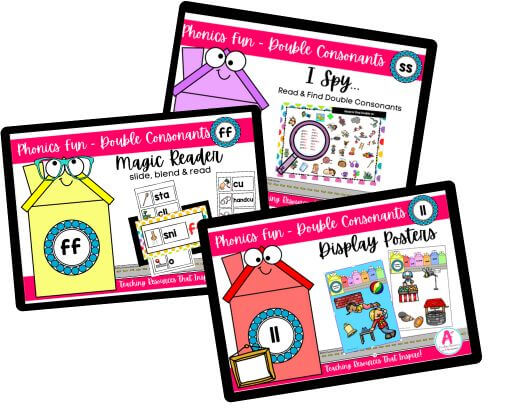
Double Consonants Collections
Can't find what you're looking for?
Send us a request! Use this form to request a resource. Please give details of the learning area, topic, year level, curriculum links. We’ll be happy to take a look to see if we can fit it in. Unfortunately a request does not guarantee we will be able to make it!
"*" indicates required fields

